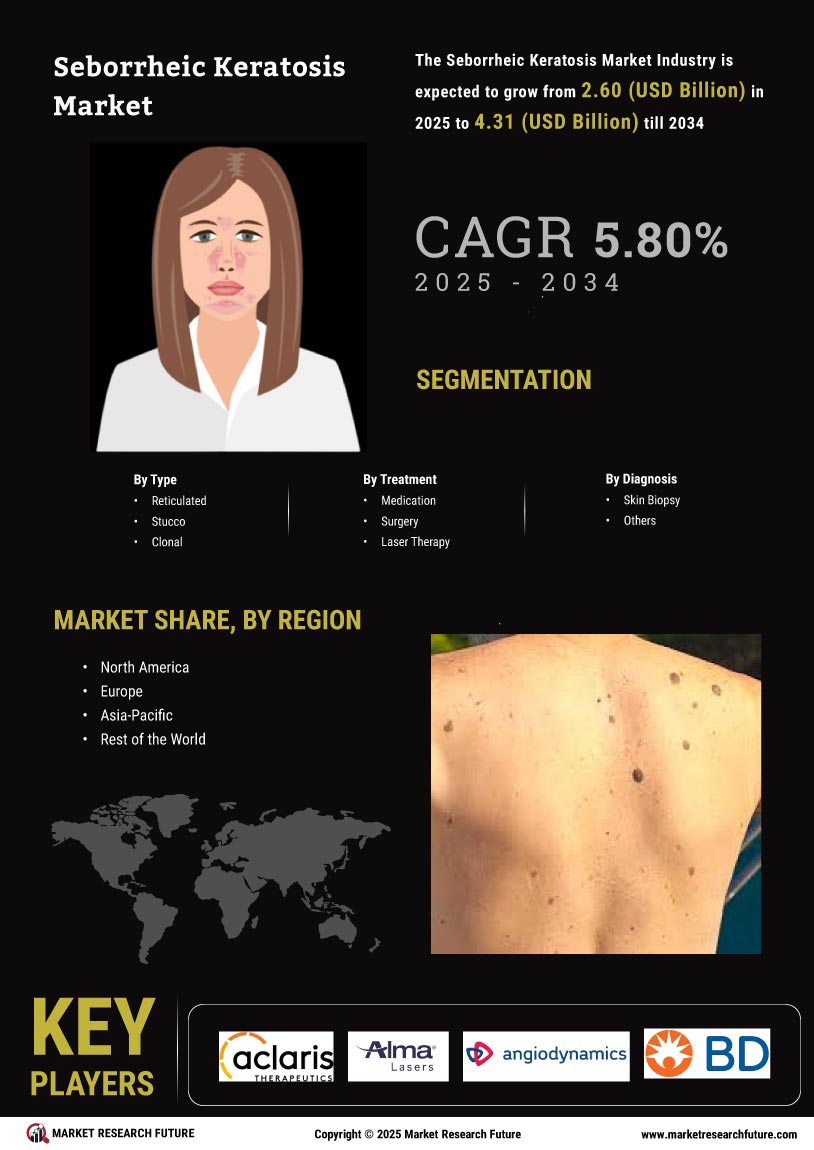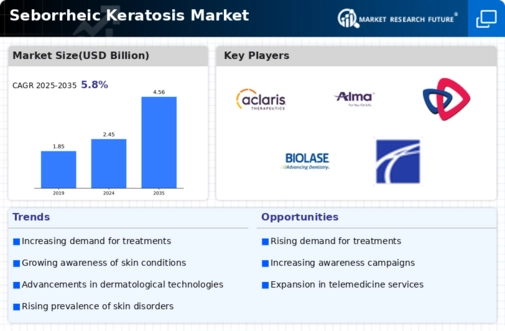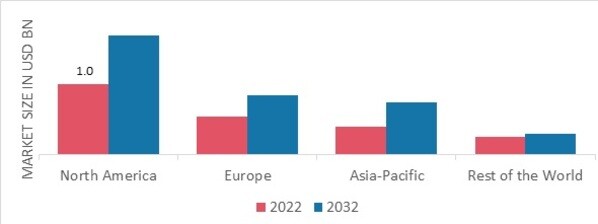Aging Population
The demographic shift towards an aging population is a significant factor influencing the Global Seborrheic Keratosis Market Industry. As individuals age, the likelihood of developing skin conditions, including seborrheic keratosis, increases. This trend is particularly evident in developed countries where life expectancy is rising. The aging population is anticipated to drive demand for dermatological services and treatments, contributing to market growth. With a projected market value of 2.45 USD Billion in 2024, the industry is poised to expand further as the population ages. This demographic trend is likely to persist, reinforcing the need for effective management of skin conditions.
Market Growth Projections
The Global Seborrheic Keratosis Market Industry is projected to experience substantial growth over the next decade. With a market value of 2.45 USD Billion in 2024, it is expected to reach 4.56 USD Billion by 2035. This growth trajectory indicates a compound annual growth rate of 5.81% from 2025 to 2035. Factors contributing to this growth include increasing prevalence, advancements in treatment options, and heightened awareness among the population. The market's expansion is likely to be supported by ongoing research and development efforts aimed at improving treatment efficacy and patient outcomes.
Growing Awareness and Education
The increasing awareness and education regarding skin health and conditions like seborrheic keratosis are pivotal for the Global Seborrheic Keratosis Market Industry. Public health campaigns and educational initiatives by dermatological associations are enhancing understanding of skin disorders. This heightened awareness encourages individuals to seek medical advice and treatment, thereby driving market growth. As more people recognize the signs and symptoms of seborrheic keratosis, early diagnosis becomes more prevalent. Consequently, this trend is expected to contribute to the market's expansion, with projections indicating a market value of 4.56 USD Billion by 2035, reflecting the impact of improved public knowledge.
Regulatory Support and Approvals
Regulatory support and the approval of new treatment options are crucial drivers for the Global Seborrheic Keratosis Market Industry. Government agencies are increasingly recognizing the need for effective therapies for skin conditions, leading to streamlined approval processes for new treatments. This regulatory environment fosters innovation and encourages pharmaceutical companies to invest in research and development. As new therapies receive approval, they become available to patients, enhancing treatment options. The anticipated growth in the market, with a CAGR of 5.81% from 2025 to 2035, reflects the positive impact of regulatory support on the availability of effective treatments.
Advancements in Treatment Options
Innovations in treatment modalities for seborrheic keratosis are significantly influencing the Global Seborrheic Keratosis Market Industry. New therapies, including topical agents and minimally invasive procedures, are being developed and introduced. These advancements not only enhance patient outcomes but also increase the demand for effective treatment solutions. The introduction of laser therapies and cryotherapy has shown promising results, leading to higher patient satisfaction. As healthcare providers adopt these novel treatments, the market is likely to experience robust growth. The anticipated compound annual growth rate of 5.81% from 2025 to 2035 underscores the potential for continued expansion driven by these advancements.
Increasing Prevalence of Seborrheic Keratosis
The rising incidence of seborrheic keratosis globally is a primary driver of the Global Seborrheic Keratosis Market Industry. As populations age, the prevalence of this benign skin condition is expected to increase. In 2024, the market is projected to reach 2.45 USD Billion, reflecting a growing awareness and diagnosis of skin disorders. Factors such as environmental influences and genetic predispositions contribute to this trend. The increasing number of dermatological consultations and advancements in diagnostic techniques further support the identification of seborrheic keratosis, thereby expanding the market. This trend is likely to continue, with the market expected to grow significantly in the coming years.

















Leave a Comment